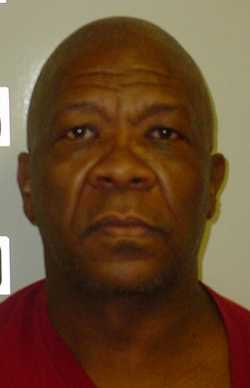
This rustic roasted carrot soup is flavored with smoked paprika, which can be found in the spice aisle of most supermarkets. Photo by Esther Oertel.
The moment the summer heat subsides, my thoughts turn to soup. The big stockpot comes off the shelf and onto the stove at the first hint of cool weather. Fall’s shorter days and winter’s dampness lead me to seek such therapeutic liquid succor.
Soup transcends time, culture, and location, with nearly every civilization having a form of it. Evidence for the existence of soup extends as far back as 6000 B.C. The invention of early waterproof containers, most likely in the form of clay vessels or pouches made of animal skins, made it possible to heat water, spawning primitive soups.
A rich stock, made from simmering meat, bones, or vegetables in water, is the secret to a good soup. Fish stock should only be boiled 30 to 45 minutes, but most other stocks take much longer to make, from three to eight hours, depending on the base.
Mirepoix, a combination of onions, carrots, and celery, contributes flavor to stock, along with various herbs and other aromatics.
Fund blanc, or white stock, is made with raw bones, most commonly chicken, and fund brun, or brown stock, is made using bones that have been roasted to add flavor and color.
Vegetable stock may be made using all manner of vegetables. Cooking water from vegetables made throughout the week may be saved in the fridge and used as the stock base.
If you’re not interested in making your own stock, don’t despair, as quality premade stocks are available at most supermarkets.
Soups are traditionally divided into two categories, clear and thick. Clear soups include broth (known as bouillon in French) and consommé, a complex soup that has gone through a clarifying process. Consommé tends to gel somewhat when cool.
Thick soups are classified based on the thickener, such as starch, cream, eggs, grains or butter. Types of thick soups include purees, bisques, and cream soups.
It was the sale of soup for medicinal purposes by street vendors in Paris that led to today’s restaurant industry. A highly concentrated, warm liquid was sold as an antidote to physical exhaustion. A Parisian entrepreneur opened a shop in 1765 to sell the restorative liquid, which prompted the use of the word “restaurant,” meaning “something restoring,” to describe the business.
The weekend sun shines in fair skies at the moment, but it’s just a matter of time before consistent soup weather is here. In anticipation of the months of happy soup-making ahead of us, below are a few of my favorite soup recipes that have developed over the years.
A Spanish proverb says, “Of soup and love, the first is best.” While I disagree that food trumps love, a good bowl of soup can certainly inspire it.
Be warmed and comforted, sip with pleasure, and most of all, enjoy.
Smokey roasted carrot soup
2 pounds carrots (about 5-1/2 cups raw, which becomes 4 cups roasted)
2 large shallots
Tablespoon olive or grape seed oil
Teaspoon kosher or sea salt
Freshly ground black pepper to taste
1-1/2 teaspoons smoked paprika
1 quart vegetable or chicken stock
About ½ of a 15-ounce can of white beans
Preheat oven to 450 degrees F.
Peel and cut carrots into uniform pieces, about 1 inch in length.
Roughly chop the shallots
In a two-quart bowl, toss carrots in the oil until all are glossy.
Add salt, pepper, and smoked paprika, tossing to combine evenly.
Turn carrots onto a baking sheet and mix in shallots.
Roast mixture in oven until tender and somewhat browned, about 25 minutes or more. (Stir halfway through for even cooking.)
Heat stock on stove in a four-quart saucepan; add carrot mixture.
Simmer for 10 minutes or so, and then add beans.
Remove from heat and puree with an immersion blender (recommended), a food processor, or a blender.
If desired, add more beans until desired thickness is achieved.
Taste and adjust seasonings, if necessary.
Ladle into bowls and garnish as desired with fresh herbs such as parsley or dill.
Makes about 8 servings.
French onion soup
10 onions (any combination of types)
3 tablespoons olive oil
1 teaspoon salt
2 cups white wine
1 quart vegetable or beef stock
1 – ¼ cups apple cider
Bouquet garni (thyme sprigs, bay leaf, and parsley tied with kitchen string)
Kosher salt
Ground black pepper
Splash of Cognac or brandy (optional)
1 cup Fontina or Gruyere cheese, grated
Croutons (recipe follows)
Finely slice onions into half moon shapes.
Heat olive oil in a large wide-bottomed pot.
Add a layer of onions to pot and sprinkle with a little salt. Repeat until all onions and salt are in the pot.
Allow onions to sweat down for 15 to 20 minutes before stirring. After that, stir occasionally until onions are dark mahogany in color and reduced to approximately two cups. This will take about 45 minutes to an hour.
Add enough wine to cover the onions and turn heat to high, reducing the wine to a syrupy consistency.
Add broth, apple cider, bouquet garni, and brandy, if using. Reduce heat and simmer for 15 to 20 minutes.
Ladle soup into bowls. Top each with a crouton, and then top with grated cheese.
Place bowls on a baking sheet and broil in oven until cheese is golden and bubbly, about 1 to 2 minutes.
Makes six to eight servings.
Croutons
French bread baguette, thinly sliced
Olive oil
Garlic cloves, peeled, optional
Heat oven to 450 degrees F.
Brush bread slices with olive oil (or toss with oil in a bowl until pieces are coated) and toast in oven until golden brown.
If desired, rub with a garlic clove after toasting.
Cream of artichoke heart soup
2 tablespoons extra-virgin olive oil
2 leeks, white part only, washed well and chopped
1 clove garlic, minced
1 small potato, peeled and chopped
1 (8-ounce) package frozen artichoke hearts, thawed
2 cups chicken stock
½ teaspoon salt
¼ teaspoon freshly ground black pepper
¼ - ½ cup heavy cream
Heat olive oil in a heavy, large pot over medium heat. Add the leeks and the potatoes and cook for 5 minutes, stirring often. Stir in the garlic and cook for another minute. Add the artichokes, stock, salt, and pepper and cook until the vegetables are tender, about 20 minutes.
Using a handhold immersion blender, or in a blender or food processor in batches, puree the soup. Add the cream to taste and blend again to combine. Taste and adjust the seasoning, if needed, and heat to serving temperature.
Makes about six servings.
Spicy Mexican bean soup with chili-garlic crostini
2 tablespoons olive oil
1 purple onion, diced
½ red pepper, diced *
½ green pepper, diced *
3 – 5 garlic cloves, finely chopped
1 quart vegetable stock (homemade or otherwise)
2 – 15 ounce cans black beans **
1 – 15 ounce can light kidney beans **
1 – 15 ounce can corn kernels
1 - 6 ounce can tomato paste
1 tablespoon red wine vinegar
2 teaspoons cumin
1 teaspoon dried red pepper flakes
½ cup roughly-chopped cilantro (plus more for garnish, if desired)
Salt to taste, if desired
Toasted pumpkin seeds or diced avocado for garnish, if desired
*Use any combination of colored bell peppers; the more colors, the merrier!
**Any combination of similar beans may be used, even 3 cans of one type. (If one type is used, black beans are recommended.)
Sauté onion and peppers in olive oil in large soup pot over medium-high heat until just tender.
Add garlic and sauté about a minute more.
Add vegetable broth, beans and corn. Once the broth comes to a boil, reduce heat to low to simmer.
Mix in tomato paste; add vinegar, cumin and pepper flakes.
Taste and adjust seasonings, if needed.
Allow to simmer for at least 10 and up to 30 minutes until flavors blend and soup has thickened.
Add cilantro and simmer a few minutes more.
Ladle into bowls and add desired garnishes.
Serve with chili-garlic crostini. (Recipe follows.)
Chili-garlic crostini
About 1 cup olive oil
3 cloves garlic
1 – 2 teaspoons dried chili flakes
1 French bread baguette, sliced
Preheat oven to 450 degrees F.
Press garlic cloves with flat of knife so they are crushed.
Warm olive oil on stove; add garlic and pepper flakes and cook a minute or so more (not long).
Remove oil from heat and allow it to rest for a bit. The longer it sits, the stronger the flavor.
Strain oil into a squeeze bottle or bowl and drizzle or brush oil on each baguette slice.
Arrange slices on a baking sheet and bake in oven until golden brown. Watch carefully; it takes only a few minutes.
Mushroom bisque with sherry
4 tablespoons unsalted butter
¼ cup all-purpose flour
¾ cup minced shallots or onions
2 cloves garlic, finely chopped
1 teaspoon finely chopped fresh thyme
¼ teaspoon freshly-grated nutmeg
1 – ½ pounds fresh mixed mushrooms, cleaned and sliced ¼ inch thick
6 cups chicken or vegetable stock (or 4 cups, plus 2 cups water)
2 – ¼ teaspoon kosher salt
¾ cup dry sherry (not “cooking sherry”)
1/3 cup cream
For garnish:
½ cup finely chopped toasted walnuts (procedure follows)
Melt butter in a large stock pot over medium-low heat. When melted, stir in flour and cook for a minute or so.
Add onions and sauté, stirring, for one or two minutes, then stir in garlic, thyme, and nutmeg and cook until fragrant, about one minute.
Add sliced mushrooms, stir to blend, and increase heat to medium. Add stock, sherry, and salt.
Cover and bring to a boil. Simmer, covered, until the mushrooms are tender, about 15 minutes.
When mushrooms are tender, puree soup using a hand-held immersion blender, a food processor, or a standing blender. (If using either of the latter two, puree the soup in batches. If using a standing blender, be sure to hold the lid tight with a towel to keep contents inside.)
If desired, soup may be strained through a medium-mesh strainer, using a ladle to help push it through. (This is an optional step.)
Once soup is pureed (and strained, if taking that step), add cream and stir to blend. If needed, gently heat soup to desired temperature.
Serve with a sprinkling of toasted walnuts.
Makes six generous or eight small servings
Note: When using a blender to puree hot soups, remove liquid from the heat and allow it to cool for at least 5 minutes. Transfer liquid to a blender and fill it no more than halfway. Release one corner of the lid, which prevents the vacuum effect that creates heat explosions. Place a towel over the top of the machine, pulse a few times then process on high speed until smooth.
Original recipes are by Esther Oertel.
Esther Oertel, the “Veggie Girl,” is a culinary coach and educator and is passionate about local produce. Oertel teaches culinary classes at Chic Le Chef in Hidden Valley Lake, Calif., and The Kitchen Gallery in Lakeport, Calif., and gives private cooking lessons. She welcomes your questions and comments; e-mail her at This email address is being protected from spambots. You need JavaScript enabled to view it..
Follow Lake County News on Twitter at http://twitter.com/LakeCoNews, on Tumblr at www.lakeconews.tumblr.com, on Facebook at http://www.facebook.com/pages/Lake-County-News/143156775604?ref=mf and on YouTube at http://www.youtube.com/user/LakeCoNews.

 How to resolve AdBlock issue?
How to resolve AdBlock issue? 












